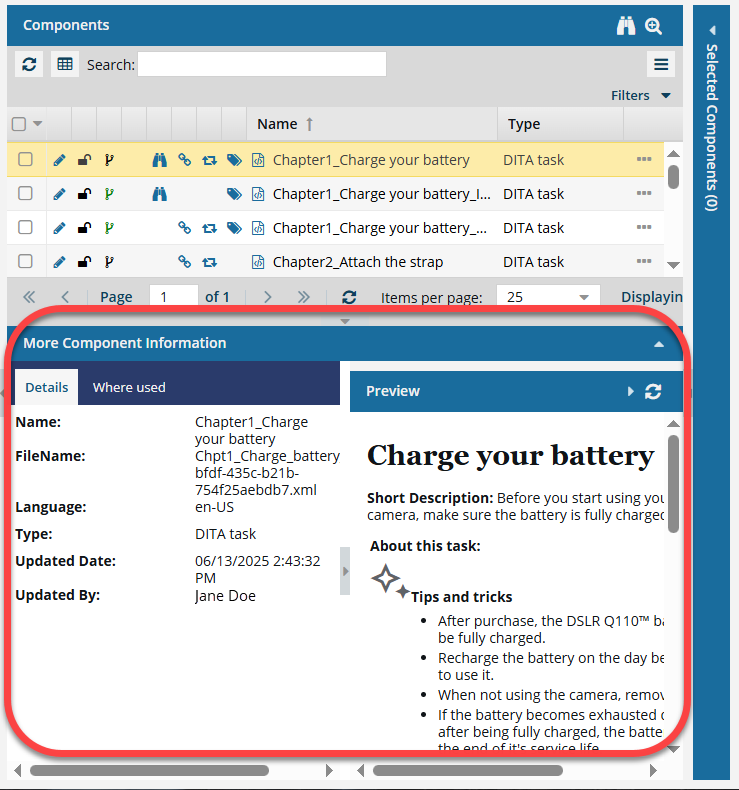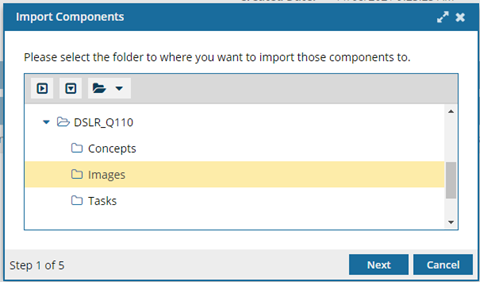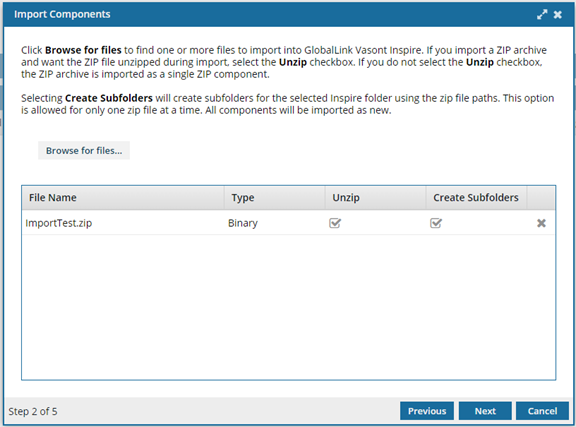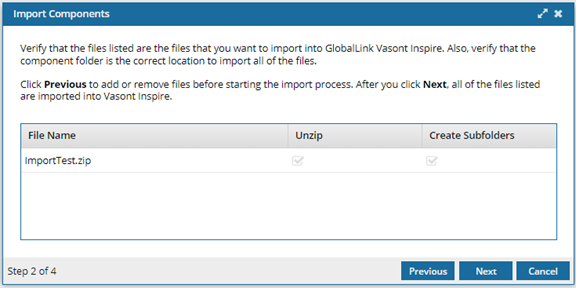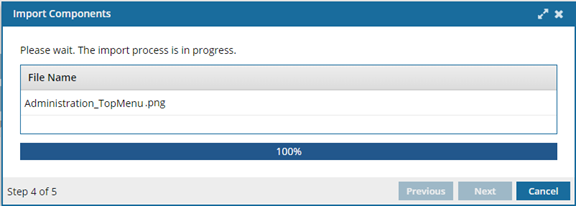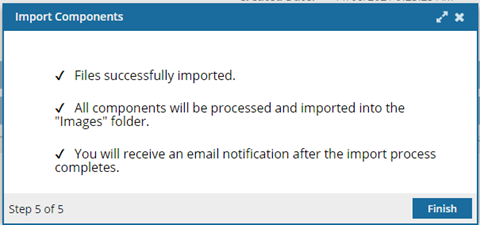Import components by browsing
If you want to add a file from your computer to Inspire so you can use it in topics, projects, reviews, and translations, then you must import it. You can import files from the Components browser or a project folder.
 Tips and tricks
Tips and tricks
Importing an entire folder structure
When you need to import content, you can import an entire folder structure and all its content by importing a ZIP file. During this process Inspire creates the sub-folders in the parent folder you select using the paths in the ZIP file. All references in the ZIP file are created even if there are duplicate file names.
- You can import a folder structure from the Components browser. Follow the steps in Import a folder structure from the Components browser.
- You can also import a folder structure when you're working in a project. Follow the steps in Import a folder structure from a project.
 If you import a ZIP file that contains folders and references that use a shorthand syntax (#./), the imported components show a valid relationship regardless of whether an administrator configures Inspire to Allow internal links to use a short format.
If you import a ZIP file that contains folders and references that use a shorthand syntax (#./), the imported components show a valid relationship regardless of whether an administrator configures Inspire to Allow internal links to use a short format.
Generating element IDs
When you import an XML file with elements, Inspire will either assign a unique ID to all elements that don't have one, or only to supported elements. If you are an administrator read Create automatic IDs for all elements.
Importing malformed XML
 If you import an XML that has incorrect syntax or uses illegal character, Inspire no longer imports the XML file as a binary with an InvalidXML file type.
If you import an XML that has incorrect syntax or uses illegal character, Inspire no longer imports the XML file as a binary with an InvalidXML file type.
- If your document does not conform to the XML syntax rules of a Document Type Definition (DTD), XML Schema, or other type of schema that defines the structure of an XML document, you see an error.
- After Inspire shows you an error, the malformed XML file is skipped.
 You can correct the XML errors and try again
You can correct the XML errors and try again
File names must be 100 characters or less
- When you create a component in Inspire, you must use a file name of 100 characters or less.
- When you export a component, a GUID (globally unique identifier) is added to the file name.
- When you import a file back into Inspire, the file name and GUID together must not exceed 200 characters.
 If the file name and GUID length exceeds 200 characters, Inspire won't import the file.
If the file name and GUID length exceeds 200 characters, Inspire won't import the file.

The files can't be part of an active translation job
When you import files by opening a folder's Options menu and selecting import, Inspire checks to make sure none of the files are in an active translation job.
If the files you are importing are part of an active translation job:
- The entire import will fail, even if some files are not part of an active translation job.
- You see an error message: You are trying to import files that are part of an active translation job. Use the "Import translation" action in the translation management tab instead.
- You see one error for each file you are trying to import that is part of an active translation job. File ({fileName}) was found in translation job ({translation job id}).
To import translation files:
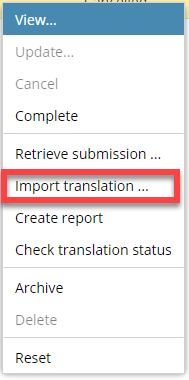
- Go to the
 Translation Management tab.
Translation Management tab. - Select the job that the files belong to.
- Right-click the job or click the
 Options menu.
Options menu. - Select Import translation...
For more information, read Import translated components.


 Results:
Results: Inspire either assigns a unique ID to all elements that don't have one, or only to supported elements. This is configured by your administrator.
Inspire either assigns a unique ID to all elements that don't have one, or only to supported elements. This is configured by your administrator.